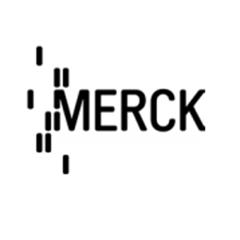German Federal Ministry of Education and Research sponsors a subproject to develop innovative electrolytes for high-efficiency large-area dye-sensitized solar cells
Darmstadt, Germany, May 13, 2013 – Merck announced today the start of a project sponsored by the German Federal Ministry of Education and Research (BMBF) to develop high-efficiency cobalt-based dye-sensitized solar cells (DSSCs). The project COBRA (organic cobalt-based low-cost printable large-area photovoltaics) will run for three years and cost a total of around EUR 3 million. Merck, the consortium leader, is participating in the research project together with 3GSolar from Jerusalem, Israel, and Colour Synthesis Solutions Ltd. (CSS) from Manchester, United Kingdom.
The partners in the project are pursuing the goal of significantly increasing the efficiency and stability of dye-sensitized solar cells. This is to be achieved, among others, by using a new cobalt-based redox system in a non-volatile electrolyte of the cell. Furthermore, the large-area dye-sensitized solar cells being developed are to have a projected lifetime of more than 20 years. This technology will offer an economically interesting alternative in parallel to the photovoltaic technologies already established today.
Merck is contributing to the COBRA project by developing high-performance cobalt-based electrolyte solutions. Over the course of several generations, the electrolyte is precisely tailored to the dyes developed by CSS. The subproject of 3GSolar focuses on optimizing the electrodes and the configuration of the dye-sensitized solar cells. This ensures harmonious interaction of all materials used, which is essential to the overall performance of dye-sensitized solar cells.
DSSCs generally convert light over a wide range of intensity into electricity. In both diffuse light and direct sunlight, electricity can be generated without compromising on performance even at elevated temperatures. As their light transmittance can be flexibly adjusted, they are ideally suitable for use in building façades and can contribute, for example, to supplying energy to office buildings. Further applications for indoor use include mobile charging stations for small electronic devices as well as power supply units for sensors (for measuring temperature, air humidity, etc.) and for electronic, wireless price displays in the wholesale and retail sector.
The project followed the call of the European Commission for sponsoring collaboration among national research programs within the scope of the initiative OLAE+ (Organic and Large Area Electronics European Competition for Collaborative R&D Funding). This initiative is sponsored in Germany by the BMBF (further information: http://www.olaeplus.eu).
About 3GSolar:
3GSolar is a global leader in development of commercial-scale printed solar cells using dye solar cell technology (“DSC”). The company developed the world’s largest single-cell printed DSC and demonstrated outdoor durability in a rooftop test station that is in operation for over three years. In addition to its commercial-size glass cells for power modules and for building integrated modules (BIPV), 3GSolar also has shown transfer of its technology to plastic foil. Company headquarters and R&D facilities are located in Jerusalem, Israel. 3GSolar’s energy producing technology will be available in 2015.
About CSS (Color Synthesis Solutions Ltd.):
CSS is a young UK based SME specializing in organic chemistry, with a specific expertise in the design and synthesis of functional colored molecules. CSS’s core business supports the research projects of large multinational companies, supplying bespoke high specification chemicals to the industry. CSS has full facilities to handle all standard organic chemistry processes, from milligram to 20L scale, with state-of-the analytical equipment to hand. CSS is using its color expertise in the design of novel DSSC sensitizing dyes to support the COBRA consortium.



























